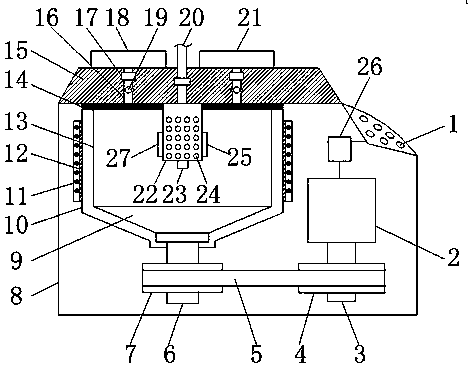A tea detection and processing device
A processing device and tea technology, applied in the preparation of test samples, etc., can solve the problems of detection of pesticide components and content, increased testing costs, low activity of organic solvents, etc., to facilitate pesticide components and content, improve effect and efficiency , The effect of convenient static screening
- Summary
- Abstract
- Description
- Claims
- Application Information
AI Technical Summary
Problems solved by technology
Method used
Image
Examples
Embodiment Construction
[0014] The technical solutions in the embodiments of the present invention will be clearly and completely described below in conjunction with the accompanying drawings in the embodiments of the present invention. Obviously, the described embodiments are only some of the embodiments of the present invention, not all of them. Based on the embodiments of the present invention, all other embodiments obtained by persons of ordinary skill in the art without making creative efforts belong to the protection scope of the present invention.
[0015] see figure 1 , in an embodiment of the present invention, a tea detection and processing device includes a detection box 8, a centrifugal cylinder 13 and a tea tube 22, the detection box 8 is provided with a heating tank 10 with an upward opening, and the side wall of the heating tank 10 is A heating plate 12 is installed on the top, and a conductive metal tube 11 is arranged on the outside of the heating plate 12. The conductive metal tube ...
PUM
 Login to View More
Login to View More Abstract
Description
Claims
Application Information
 Login to View More
Login to View More - R&D
- Intellectual Property
- Life Sciences
- Materials
- Tech Scout
- Unparalleled Data Quality
- Higher Quality Content
- 60% Fewer Hallucinations
Browse by: Latest US Patents, China's latest patents, Technical Efficacy Thesaurus, Application Domain, Technology Topic, Popular Technical Reports.
© 2025 PatSnap. All rights reserved.Legal|Privacy policy|Modern Slavery Act Transparency Statement|Sitemap|About US| Contact US: help@patsnap.com

